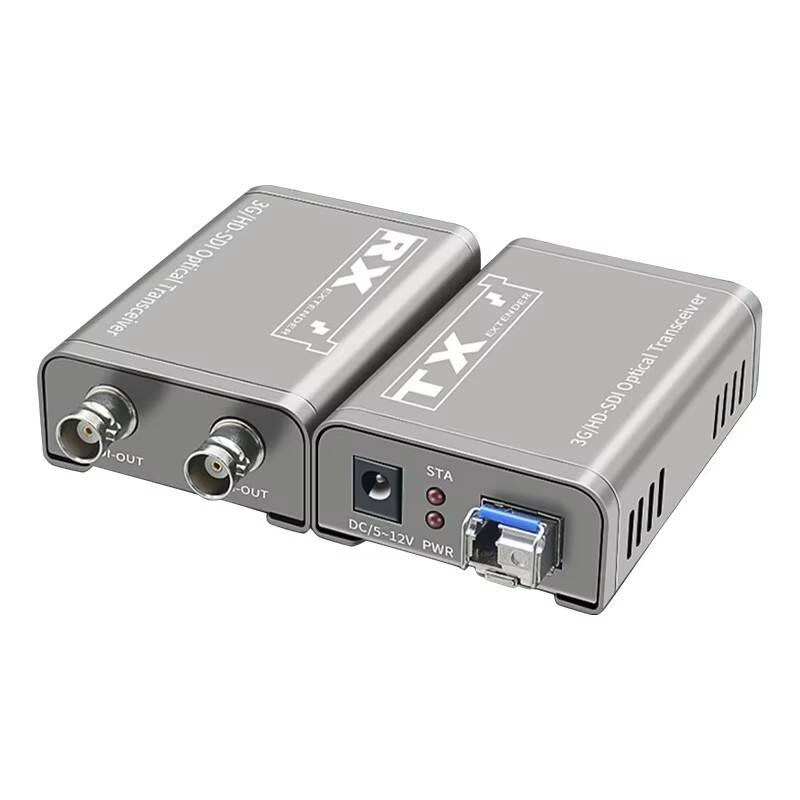IP to Coaxial Converters: Revolutionizing Network Flexibility in the Digital Age
In today’s fast-paced digital landscape, where data flows at unprecedented speeds and connectivity defines operational success, the need for flexible and efficient network cabling solutions has reached a critical juncture. Among the innovative technologies reshaping this space, the IP to coaxial converter stands out as a bridge between legacy infrastructure and modern networking demands. This device not only addresses the challenges of transitioning to IP-based systems but also unlocks new possibilities for businesses seeking to optimize their existing resources.
The Evolution of Network Infrastructure: A Clash of Eras
The last decade has witnessed a seismic shift in network architecture, driven by the exponential growth of high-speed internet, cloud computing, and data-intensive applications like video conferencing and IoT (Internet of Things) devices. Traditional coaxial cables, once the workhorses of television broadcasting and early broadband services, now find themselves at a crossroads. While Ethernet and fiber-optic cables dominate modern networks for their high bandwidth and scalability, millions of buildings worldwide still rely on coaxial infrastructure installed decades ago.
This is where the IP to coaxial converter becomes a game-changer. Rather than discarding costly coaxial systems, businesses can repurpose them to support IP-based communication. This hybrid approach eliminates the need for a complete infrastructure overhaul, making it a cost-effective choice for industries such as healthcare, education, and retail—where budget constraints often limit large-scale upgrades.
Extending Network Reach Without Rewiring: A Cost-Saving Marvel
One of the most compelling advantages of IP to coaxial converters is their ability to extend network coverage without extensive rewiring. For organizations operating in sprawling facilities—such as manufacturing plants, university campuses, or multi-story office buildings—running new Ethernet cables can be a logistical nightmare. Not only does it involve tearing down walls, disrupting daily operations, and incurring high labor costs, but it also risks damaging historical or architecturally sensitive structures.
By converting IP signals into a format compatible with coaxial cables, these devices enable seamless connectivity across vast distances. Coaxial cables, known for their durability and resistance to electromagnetic interference, can transmit data over longer spans than standard Ethernet cables (which typically max out at 100 meters). This makes them ideal for connecting remote devices—such as security cameras in parking lots, POS systems in retail aisles, or sensors in industrial warehouses—to the main network hub, ensuring consistent performance even in hard-to-reach areas.
Enhancing Design Flexibility: Adapting to Dynamic Environments
Network design flexibility is no longer a luxury but a necessity in today’s dynamic business world. Environments like event venues, trade shows, or temporary workspaces require frequent reconfiguration, and rigid cabling systems can hinder agility. IP to coaxial converters empower organizations to place devices where they are most needed, unshackled by the limitations of Ethernet’s shorter reach or fiber’s fragility.
For example, a hotel hosting a large conference can quickly set up IP cameras, digital signage, and Wi-Fi access points using existing coaxial cables routed through walls or ceilings. If the event layout changes, technicians can relocate devices without reinstalling cables, saving hours of setup time. This adaptability is equally valuable in sectors like construction, where temporary offices or job sites need reliable connectivity that can be dismantled and reassembled with ease.
Integrating Modern Technologies: Bridging the Old and New
The digital era demands integration: legacy systems must work in harmony with cutting-edge technologies. IP to coaxial converters excel in this role by enabling the seamless integration of IP-based devices into coaxial networks. Consider security systems, for instance: many organizations are upgrading from analog CCTV cameras to high-definition IP cameras for better resolution and remote monitoring. Instead of replacing coaxial cables with Ethernet, a converter allows these new cameras to transmit data over the existing coaxial infrastructure.
Similarly, IoT devices—such as smart thermostats, motion sensors, and asset trackers—rely on IP connectivity to communicate. By using converters, businesses can connect these devices to their coaxial networks, avoiding the need to install separate Ethernet lines. This integration not only simplifies network management but also future-proofs the infrastructure, allowing for the gradual adoption of new technologies without sudden disruptions.
Future Trends: The Rise of Hybrid Networking
As businesses continue to navigate the complexities of digital transformation, hybrid networking—combining traditional and modern cabling systems—is emerging as a dominant trend. IP to coaxial converters are at the forefront of this movement, enabling organizations to maximize their existing investments while embracing innovation. According to industry reports, the global market for network converters is projected to grow by 7.2% annually through 2030, driven by the need for cost-effective infrastructure upgrades.
Moreover, advancements in converter technology are expanding their capabilities. Modern models now support higher bandwidths (up to 10 Gbps), PoE (Power over Ethernet) pass-through, and encryption protocols, making them suitable for even the most demanding applications. This evolution ensures that coaxial networks, once considered obsolete, can now support the same high-performance standards as their Ethernet counterparts.
Conclusion: A Flexible Foundation for Digital Success
In an era where adaptability is key to survival, the IP to coaxial converter offers more than just a temporary solution—it provides a strategic foundation for sustainable network growth. By bridging the gap between legacy coaxial infrastructure and modern IP-based systems, it empowers businesses to reduce costs, minimize disruptions, and stay agile in the face of technological change.
As organizations continue to balance the need for innovation with the constraints of existing resources, the role of IP to coaxial converters will only become more vital. They are not just tools for extending connectivity but enablers of a more flexible, efficient, and future-ready network ecosystem—one that can evolve alongside the ever-changing demands of the digital world.
Table of Contents
- The Evolution of Network Infrastructure: A Clash of Eras
- Extending Network Reach Without Rewiring: A Cost-Saving Marvel
- Enhancing Design Flexibility: Adapting to Dynamic Environments
- Integrating Modern Technologies: Bridging the Old and New
- Future Trends: The Rise of Hybrid Networking
- Conclusion: A Flexible Foundation for Digital Success

